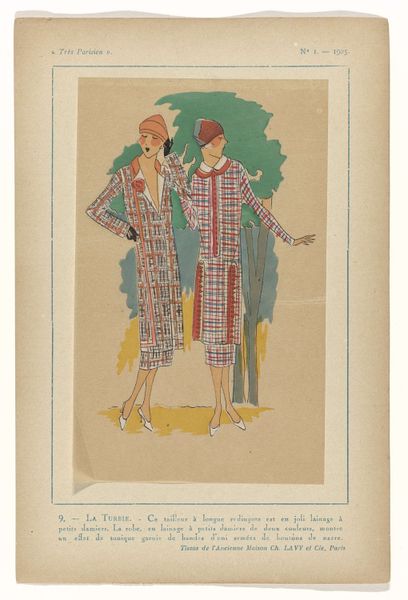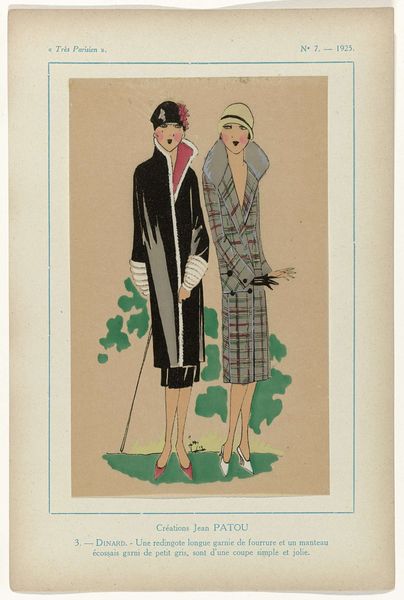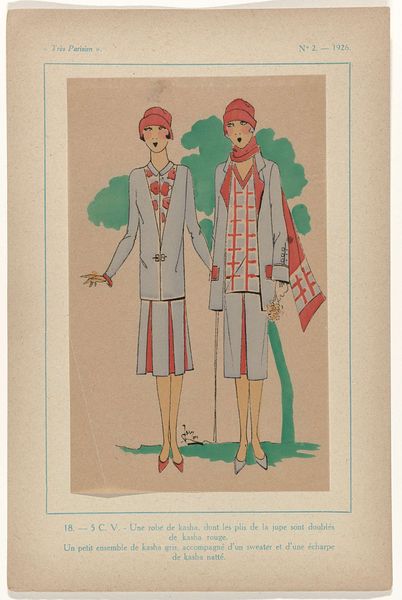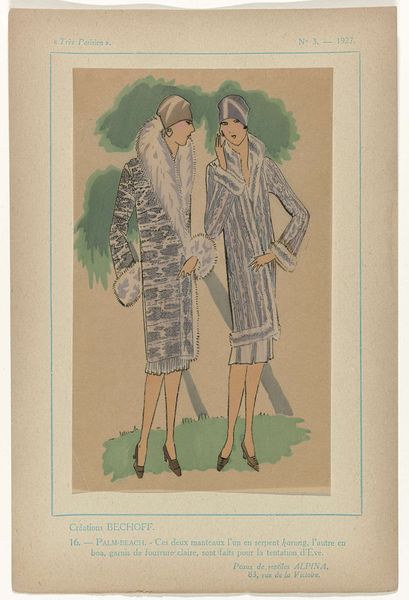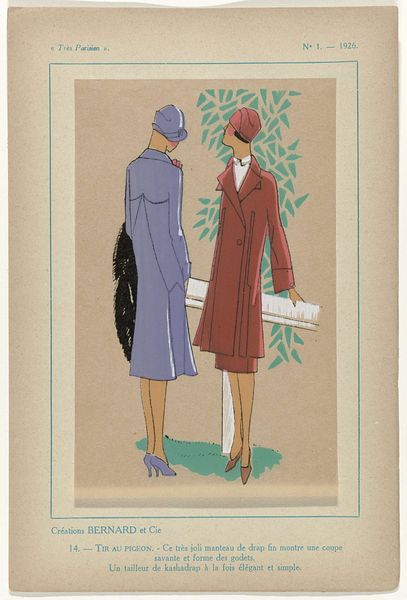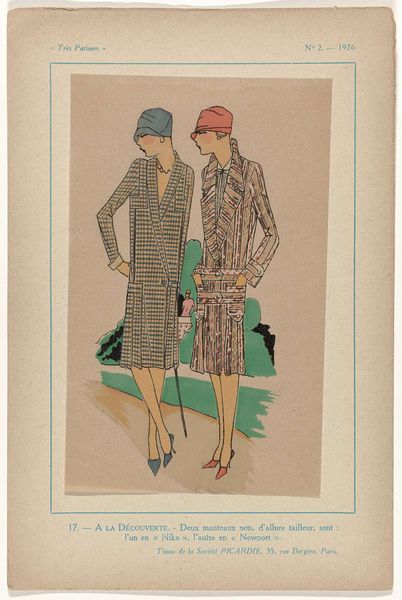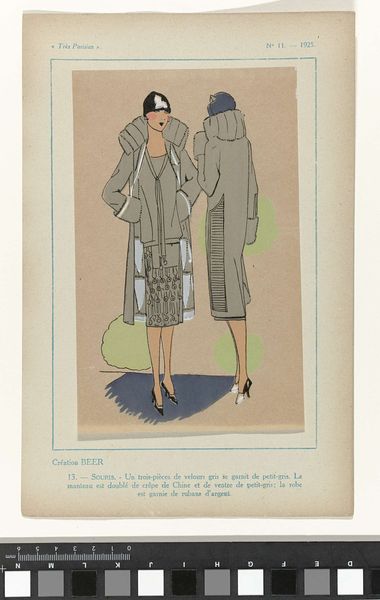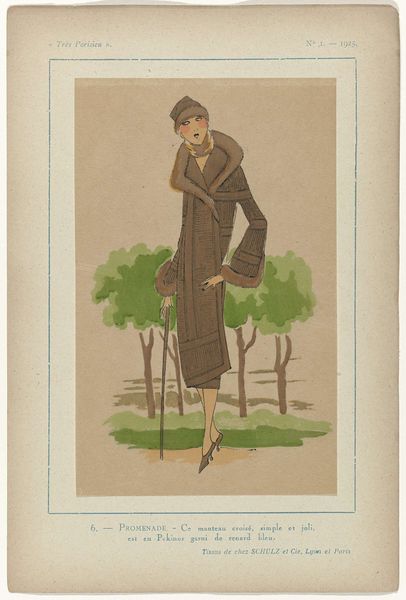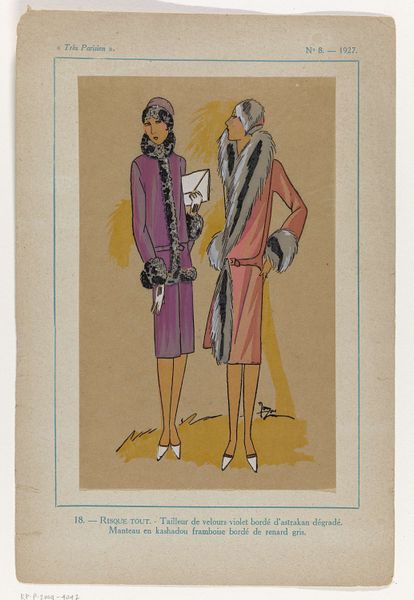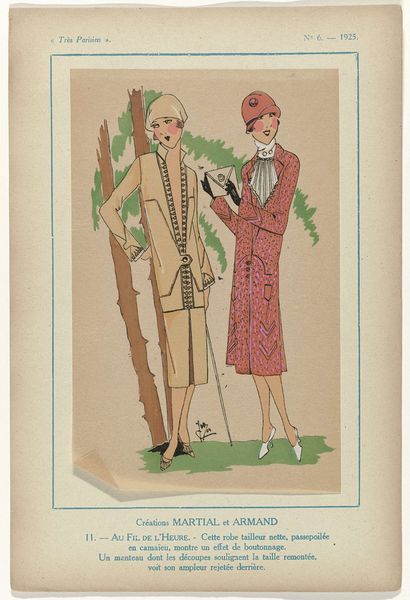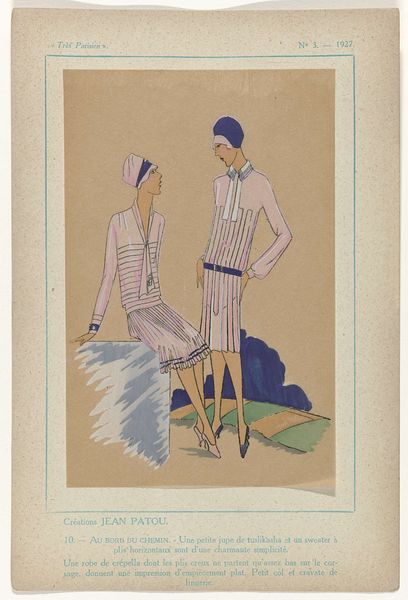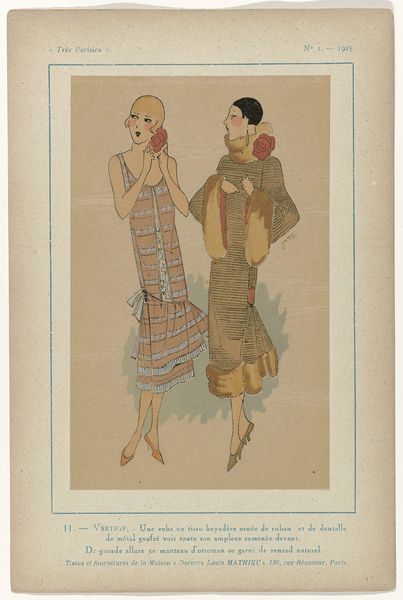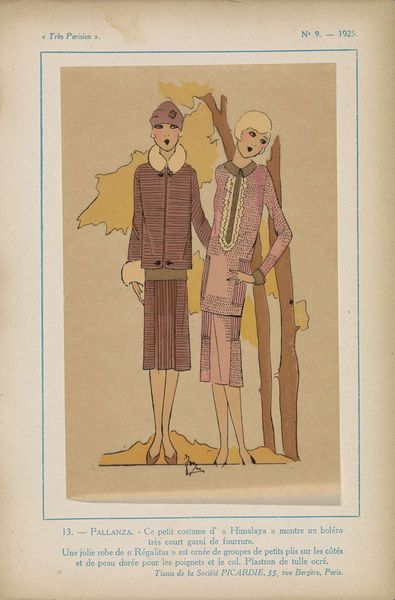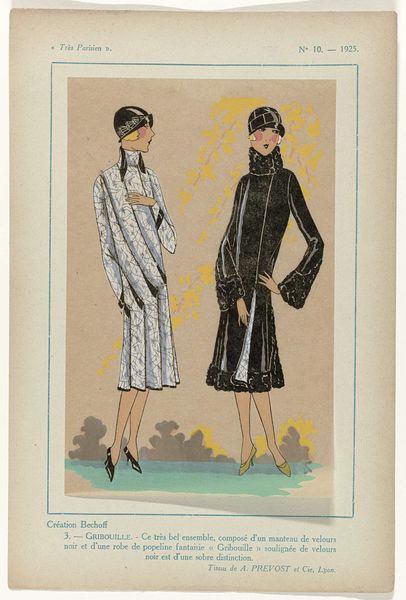
Très Parisien, 1925, No. 1, Pl. 4: Créations RÉVILLON et Cie, - Lancelot (...) 1925
0:00
0:00
mixed-media, print, ink
#
art-deco
#
mixed-media
# print
#
historical fashion
#
ink
#
watercolour illustration
#
genre-painting
Dimensions: height 195 mm, width 120 mm, mm
Copyright: Rijks Museum: Open Domain
Curator: What a fascinating piece! This is "Très Parisien, 1925, No. 1, Pl. 4: Créations REVILLON et Cie, - Lancelot (...)" by G-P. Joumard, created in 1925. It’s a mixed-media print, incorporating ink and watercolor. It currently resides here at the Rijksmuseum. Editor: My initial reaction is… understated elegance. The muted color palette creates a sophisticated atmosphere, despite the slightly cartoonish rendering of the figures. And that adorable little dog! There’s something both chic and slightly melancholic about it. Curator: Absolutely. The emphasis here, for me, lies in understanding how this image was produced, circulated, and consumed. It's clearly an advertisement for REVILLON et Cie, a furrier. Looking at the ink and watercolor suggests a method easily reproduced for a fashion-conscious public eager to imitate what they saw as fashionable dress. It serves as a document of production and marketing, linking labor to luxurious objects and aspirations. Editor: Precisely. Consider the socio-political implications, though. This image appears during the interwar period, a time of shifting gender roles. The women are depicted as confident and stylish, representative of a new kind of female consumer empowered by economic independence, but at what cost to exploited animal populations or laborers behind the making? The dog itself is reduced to a mere accessory. There is much implied about access, aspiration and identity, right? Curator: I completely agree. It demonstrates the commodification of Parisian chic but it also raises pertinent questions about class, consumption and visual media in relation to women. The choice of materials themselves underscores that duality – affordable printing techniques representing high-end luxury. Editor: And how these images reinforce beauty standards, prioritizing thin, white, upper-class women, erasing diverse representations and promoting exclusion under the guise of ‘high’ fashion. The visual language presents "Frenchness" and sophistication as markers of class and desirability. Curator: Indeed, it serves as a microcosm of the anxieties and aspirations of the era. Focusing on how these images are consumed, one must then consider it alongside feminist theory to further illuminate the complexity and intersectional tensions regarding the subject matter depicted within these art deco advertisements. Editor: Considering it beyond just an appealing print really underscores the cultural narrative it participates in shaping. It gives the object critical weight. Curator: Indeed, by paying attention to production and purpose, one cannot look at an object and not ask further and imperative social questions of these representations and forms.
Comments
No comments
Be the first to comment and join the conversation on the ultimate creative platform.
